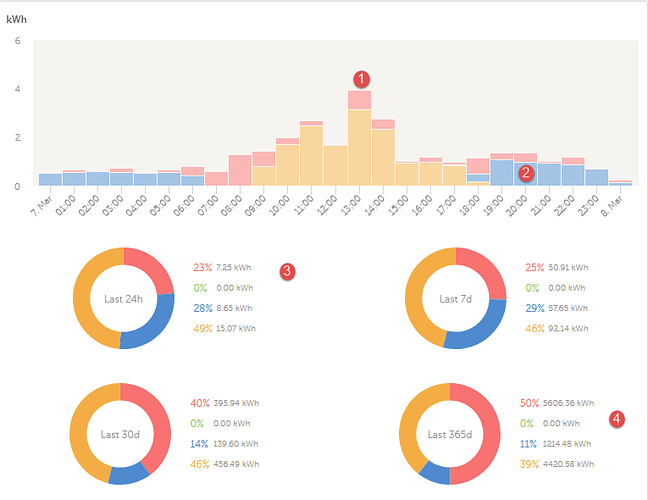I have seen the inside of a Victron too, looks worse than some lego creations of mine when I was in kindergarten. ![]()
you made this in kindergarden??? ![]()
apologies @Speedster … any case, the sunsynk looks like the better of your options. Look into the high frequency noise issue some people have on their sunsynks (does not appear present in all and even if present your install location could make it irrelevant).
Please stay well clear of Growatts.
The Sunsynk is almost certainly the “better” option from a technical point of view. The Growatt is the “better” option from a budget point of view. Since I don’t need the additional functionality of the Sunsynk, the question is whether the Growatt is reliable enough given its cheaper build quality.
Does this hold for all Axpert-types, or only the Growatt? I’m looking into the LuxPower a bit too - is that also a no-go?
I have personally witnessed a few times in different shops how unhappy clients through their Growatts on the table demanding their money back… Take it from an installer, youll be a lot better off buying the sunsynk,
EDIT: Something else you need to know, In a course a will back, the guy in front told us, the only way to keep a Growatt stable is to connect the input and output neutrals together, that in its own is totally against NRS regulations. This might also answer your question earlier why they have regulatory issues.
I certainly thought so!
At the price of Lego, that was probably more expensive than an actual Bugatti…
Its better to stay clear of any of the Voltronic “family” group. I refuse to sell them to my clients as I am just to busy to try and run around with support/repair issues. This includes Luxpower.
I see you need around 25kW/day. A well installed hybrid inverter such as a Sunsynk with its max amount of panels of 6.5kW will easely do 25kW/day if there is plenty storage or daytime use to utilize the production. 30kW+ per day will be no strange event.
I will start off with 1x 5kW Sunsynk/Deye inverter with as many panels and battery capacity before I even consider a Growatt unit. I often do Sunsynk and they perform very well. For that matter I will not even look at the 8kW if bigger backup circuit capacity is not what you need.
You raise some very valid points. The thing is though we often exceed 5kW (albeit for short periods) and this will probably only increase as the kids get older. But tbh I hadn’t really considered the single 5kW Sunsynk with the plan to add a second later…
Now you’ve gone and muddled my plans again ![]()
I don’t think it’s wise to plan to install a sunsynk now with the hopes of adding a second inverter in a few years. They are coming out with new inverters pretty often and making changes to existing models. Highly likely that the new one will not be compatible with the existing.
I went down that road when I was told I would be able to add another. It was one of the deciding factors in me buying a sunsynk. When I got another inverter a year later, it was not totally compatible and balanced. 1 would often trip when there was a sudden change in loads. Eventually sold the older 1 and got another exact model as the new one. Now they are fine.
So rather plan for the major items now like the inverter, wiring and minimum battery / panels and you can add more panels / additional batteries at a later stage if finance is the problem. However, compared to a year ago, I find most things around 20- 40 % more expensive. With thr current macro conditions, it’s not going to get any better. With the energy issues as a result of Russia Ukraine conflict everything is going to get more expensive. Energy is needed for getting raw materials, production, logistics.
As others have said, getting a non bra certified inverter is penny wise, pound foolish. If regulations change and you are forced to disconnect your non nrs certified inverter, you lose what you paid for the inverter, you pay additional for a certified inverter, a new installation / coc. Is it really worth the savings you get on the growatt / voltronic.
Just my 2 cents.
What I did.
I started with a Phoenix inverter, off-grid, and made it work for years. Sold it easily.
Then a 3kva, I maxed it grid-tied. Sold it easily.
Then a 5kva, I never max it, grid-tied.
Lessons I learned:
You can start with X, and upgrade over time. BUT(!) some makes sell faster 2nd handed than others cause like the warranty follows the device, not the buyer IF you bought yourself into a corner. Been there, done that.
NOW I’m stuck with a ±30kwh battery bank … I don’t have the panels to charge it
a) I get more panels?
b) I don’t, halve the bank.
My point?
You NEVER get it perfect, till you “walk the talk”. Just make sure you can get yourself out of a corner If you bought yourself into one.
Focus on the low-hanging “fruit”, not what you “think” you need, as a 5kva gets you a hell of a distance. removing the 24/7/365 loads, the loads that actually cost you money, and they are never 5kva 24/7/365.
For example, I’m new to BIG battery banks (30kwh), I’m “walking the talk” as “they” say.
- To bring that down, that being a “bad weather” day with clouds, What is the cost vs the ROI over 12 months?
- To recharge that on a daily basis (currently 30% used) WHILST powering the daily usage (I need another 4kw panel on good days), what is the cost vs the ROI to “fix” that? Keeping in mind, summer vs winter differences.
- That is nice for a bad weather day, 9-12% (till I have it figured ito settings for cooking) on a good sunny summer day … but …
- THAT is the figure I’m focussing on all the time, for the first time ever, having made a 280ah batch matched Grade A “investment” over 20 years. Currently, I’m “testing” 560ah, and I don’t have enough panels. for 560ah bank

My point: It is a rabbit hole. Until you’ve dunnit, you have no idea what’s coming, having made the lifestyle changes, implemented Sonof/Home Assistant to further fine-tune it all. ![]()
Relax, don’t overthink it. Buy right that you can sell easily If you got it wrong … the 1st, 2nd 3rd etc round.
You are likely to exceed 5kW every now and then, but during loadshedding surely you would be able to be more disciplined? These hybrid inverters typically have a huge transfer capacity (my Multiplus has 50A it can take from the grid, plus then then the 20A it can deliver itself) so you shouldn’t need to worry about demand when there isn’t loadshedding. Your main breaker would trip on 63A. Obviously not all hybrids have the same transfer capacity, so you would need to check yours. Pretty sure Sunsynk is fine as well. They didn’t exist yet when I bought my inverter, so don’t know they specs well enough.
We exceed 5kW also, but that is only with the help of non-essential loads. During loadshedding those cannot contribute and we are then disciplined to only use one heating appliance in the kitchen at a time, i.e. kettle, toaster, microwave etc.
At some point I might put up an old tablet in the kitchen to just display the Home Assistant interface all the time. Then the family members can take responsibility for deciding whether to use one/two things.
Thanks. Sage advice!
Fortunately, as mentioned up top, load-shedding isn’t a factor in my case.
In that case the return on investment is likely to be quite poor going from the 5kW to the 8kW Sunsynk, unless you are more often than not exceeding 5kW for extended periods of time.
The 8kW does have some other advantages, if I’m not mistaken, such as more MPPTs, which could be good to have in individual circumstances. So need to consider your roof situation and demand profile. Even then, I can’t see it being worth the extra money.
As I’ve mentioned before, getting the 8kW might also require having to purchase more battery capacity and the ROI of batteries are less clear cut than for an inverter and panels. For example, Victron recommends getting 10.5kWh (3xPylontech US3000 series) of capacity with their 5kVa Multiplus (probably 10kWh of lithium or more).
Have you considered a Solis Grid-tied inverter, with no batteries?
I have a 5 kW Sunsynk with ONLY a 4.8 kWh Pylontech and 6.4 kWp of panels, often the high draw appliances on non-essential, will go up to 7.8 kW, but everything works.
Once in a while i think it would be nice to have an 8 kW, but very quickly, my bank balance brings me down to ground zero, for 2021 I achieved an 85% ratio of total consumption to units bought from the grid and that is with the 4.8 kWh battery, cycled to 20% soc everyday

